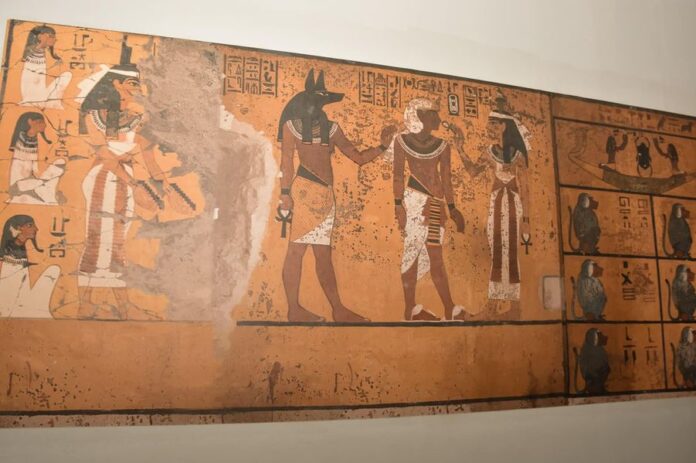
Ministry of Tourism and Antiquities of Egypt has shared the history and key historical facts of the Saffron Archaeological Palace Museum on the auspicious occasion of its opening. Learn about its most important collections and the history of the archaeological palace.
The Saffron Palace Museum
The Saffron Palace Museum contains 167 artefacts that observe ancient Egyptian history in various eras from ancient to modern times. The artefacts are carefully selected from the warehouses of archaeological sites and museums of the Supreme Council of Archeques.
The collectables are selected from the museums, including both Egyptian Liberation, Kafr El-Sheikh, Islamic art, Al-Menil Palace and royal vehicles, as well as a collection From the archaeological works of the excavators of the Egyptian archaeological mission of Ain Shams University and working in the Arab Al-Hasan region.

The Museum also features some of the University’s collections, represented in a collection of Bordi paper and coin from the Greek, Roman and Islamic times, and heritage manuscripts from the University’s library collections.
The History of Saffron Palace
The Saffron Palace Museum was built by Al-Khadawi Ismail on the ruins of the pebble palace in Al-Abbasi built by Muhammad Ali Pasha; the palace was used at the beginning of its construction for weekends and horse riding and then used as the headquarters of King Fouad I (1868-1936 AD), and Queen Nazli as born by King Farouk I (1920-1965 AD).
Afterwards, in the reign of King Fouad I, Fouad I Secondary School took over from the palace where it was headquartered, and when it was decided to move the Egyptian University to the Palace of Saffron in early 1925 AD, this school was moved to Al-Abbasiya.
The place of the Husseinia School. In 1925 AD, the headquarters of the Egyptian University was moved to the Saffron Palace, and in 1930 AD, the University’s headquarters was moved from the Saffron Palace, then it was purchased by the Ministry of Foreign Affairs.

Furthermore, it was completely restored and furnished with luxury furniture until it became an official house for hospitality, and it became a residence for senior visitors in the period 1930-1947 AD when a number of Kings, including King Abdul Aziz Al Saud King of Saudi Arabia and King Albert King of Belgium.
As per the authorities from the Museum, “This palace has been recorded in Islamic, Coptic and Jewish monuments” It was also said that “Based on the decision of the Standing Committee on Islamic and Coptic Monuments, at its session dated 29/12/1985, agreed to take procedures regarding its registration.”
The building of the Museum followed the planning of the palace; it consists of two first and second floors, a basement and a terrace and has a number of building blocks. The palace has two entrances, one of which is a major on its northern face and the other on its southern face.
First floor: It consists of an entrance hall that opens a number of rooms.
The second floor: Consists of a large hallway that opens a number of rooms, and the exterior architecture of this palace consists of four stone sides crowned by prominent decorations in Baroque and Rococo styles.
MAIN FACILITY: In the north-eastern direction, this main entrance facade of the palace intersects with a gazebo to a road with views from the northwest and south-eastern sides. The black basalt floor has been primed, and the basement facade is three central entrances.


